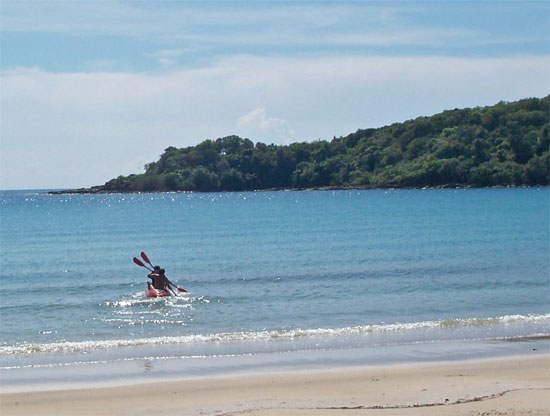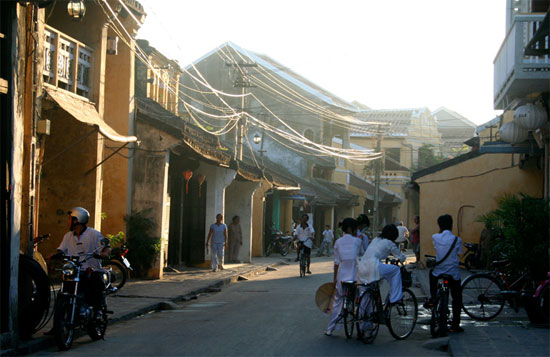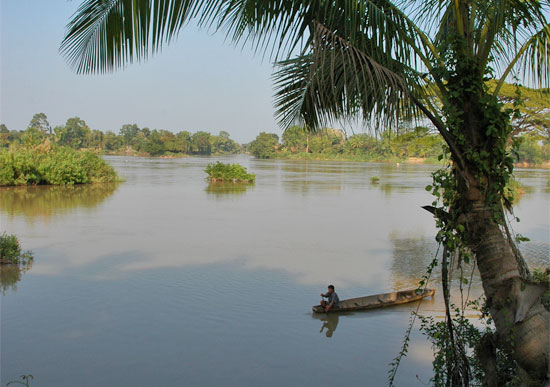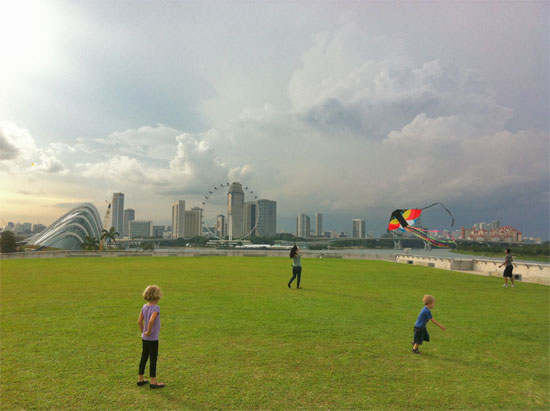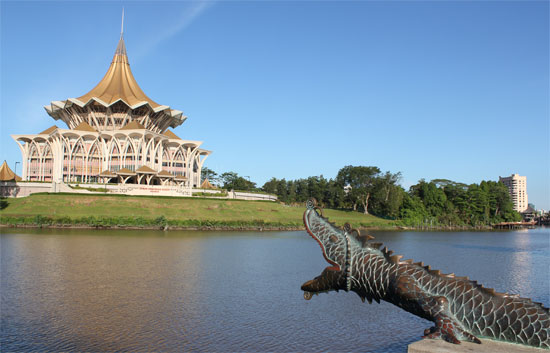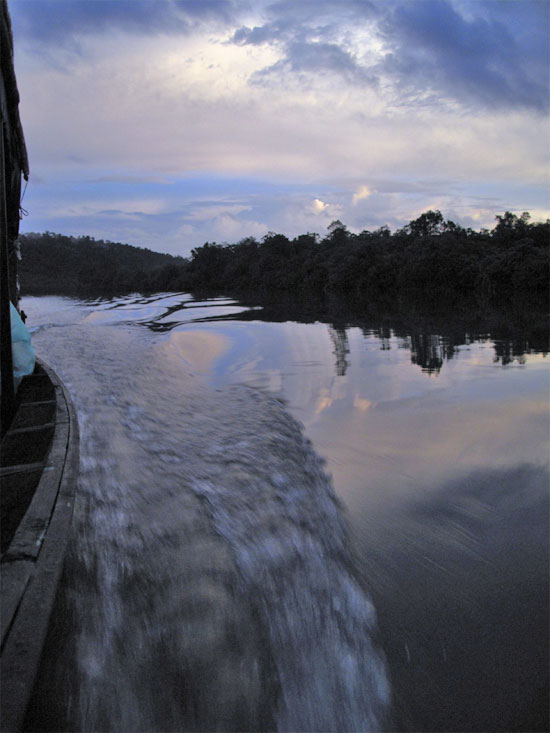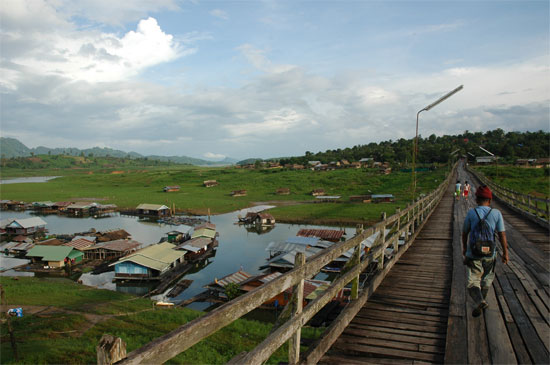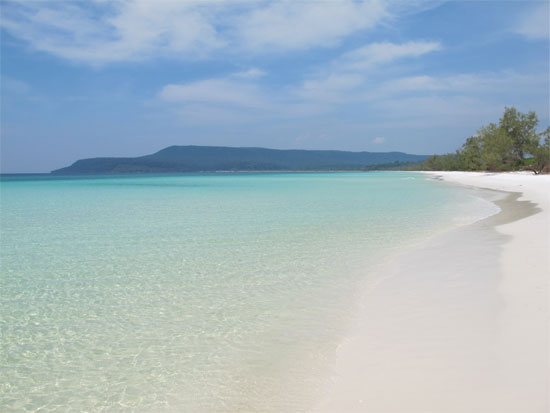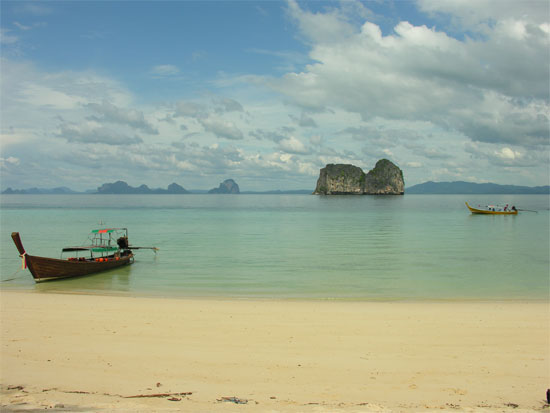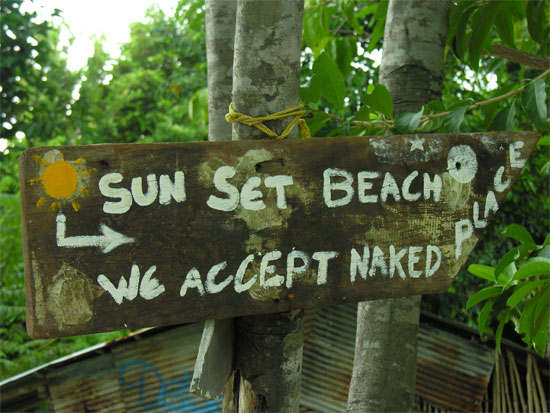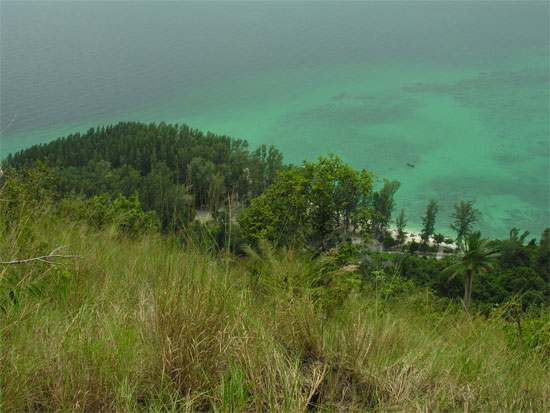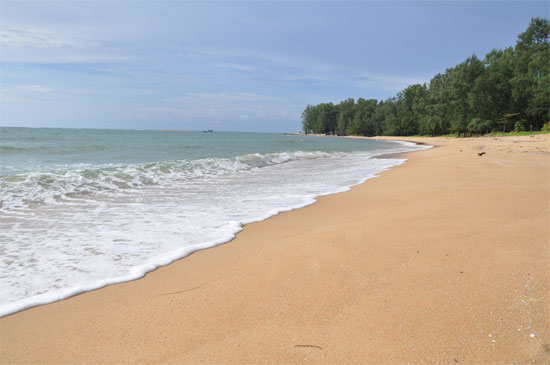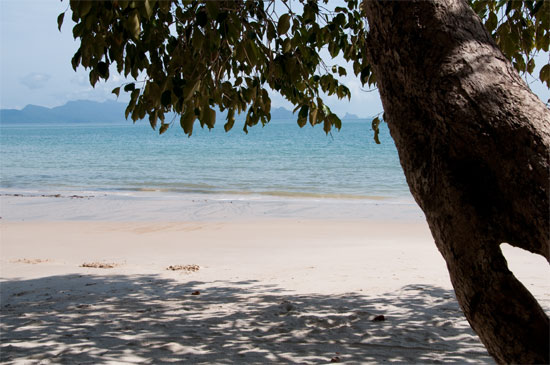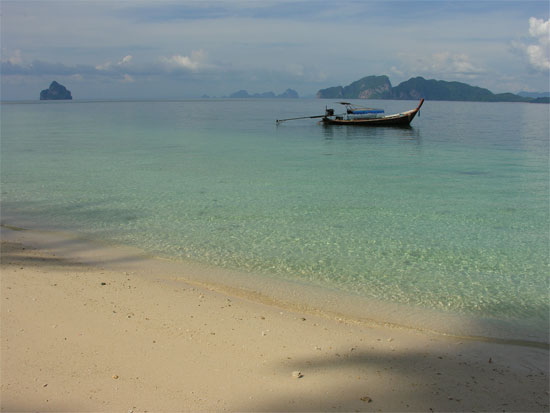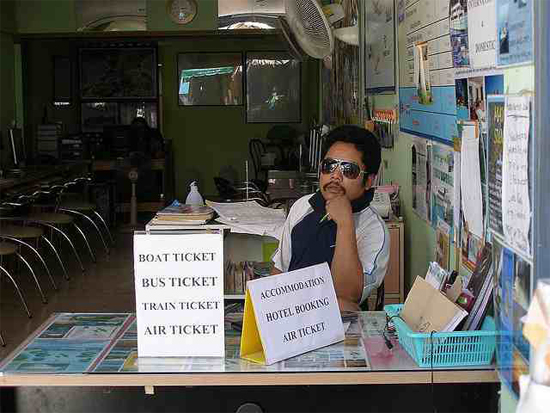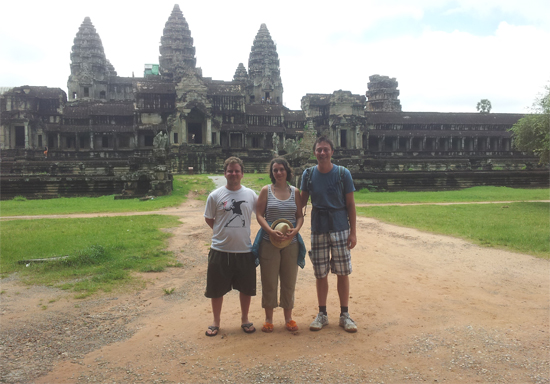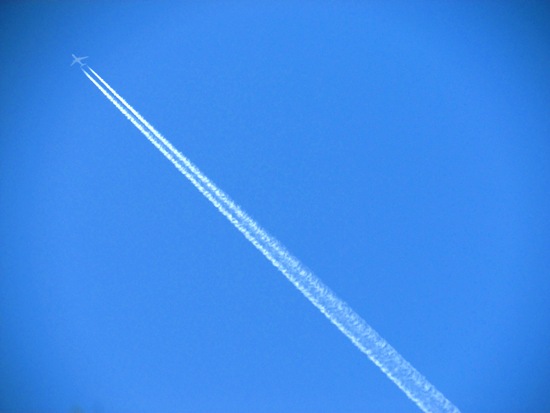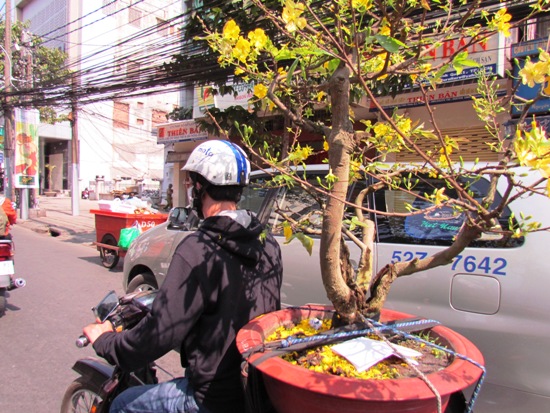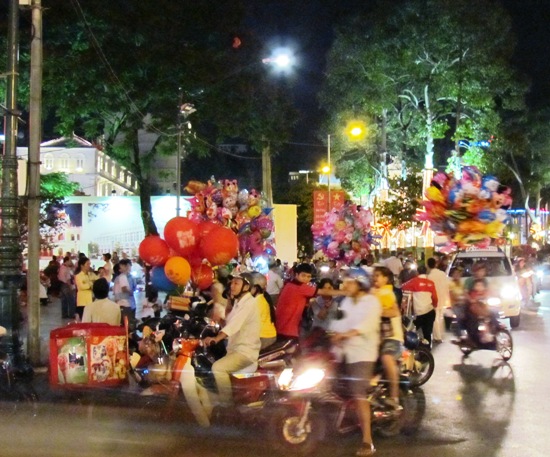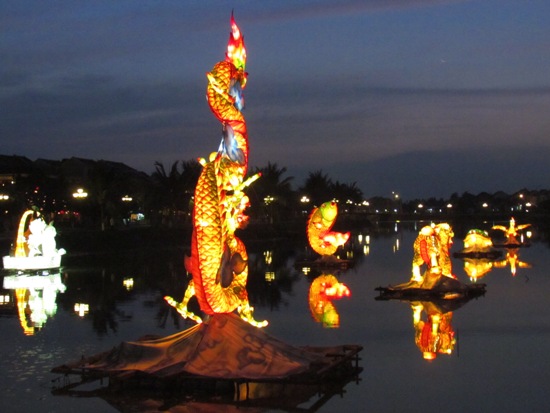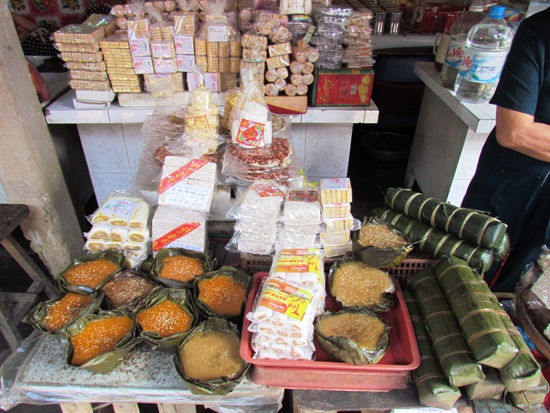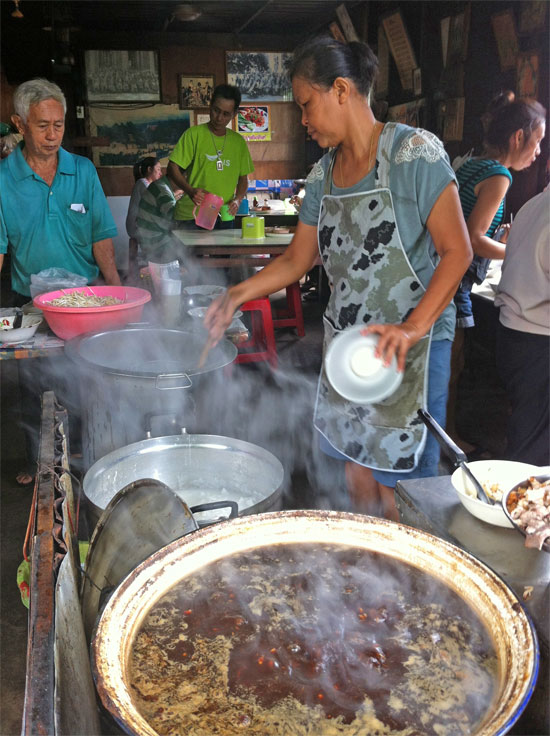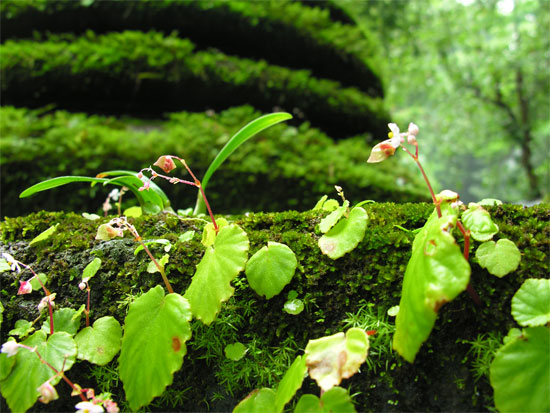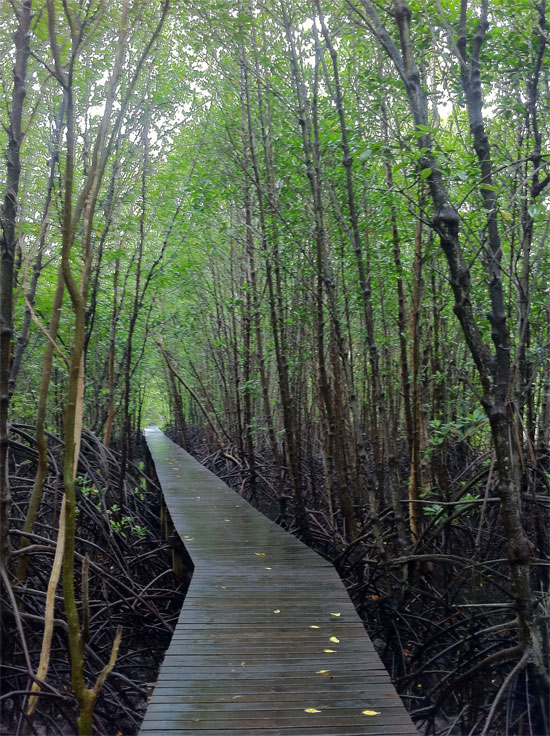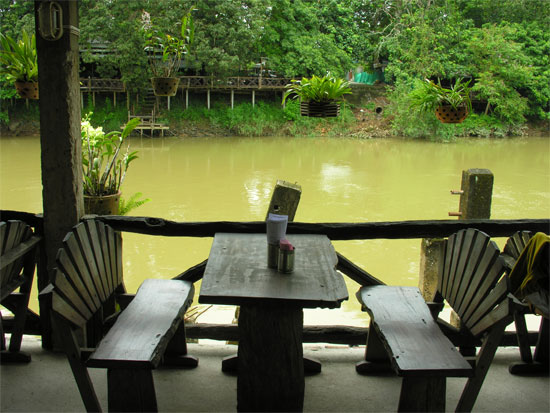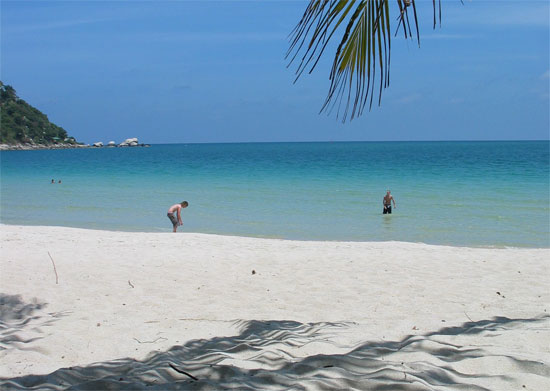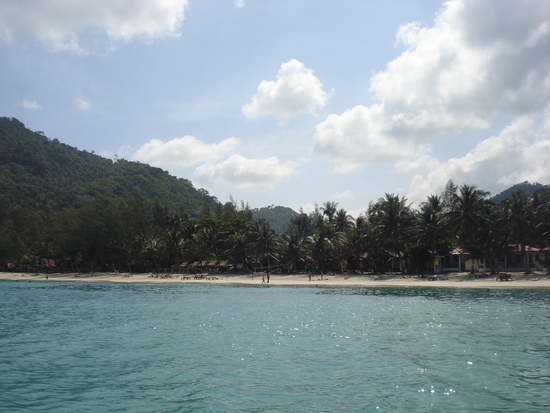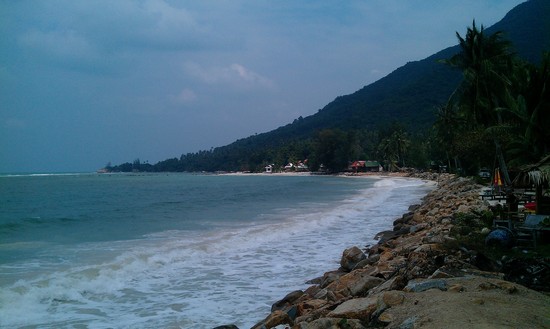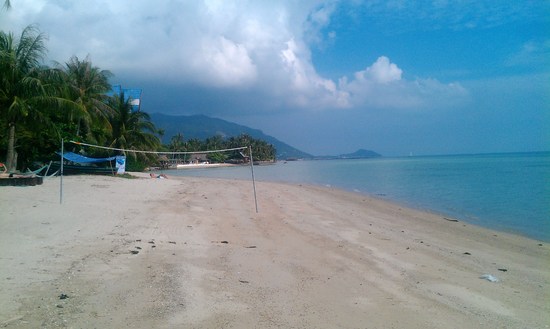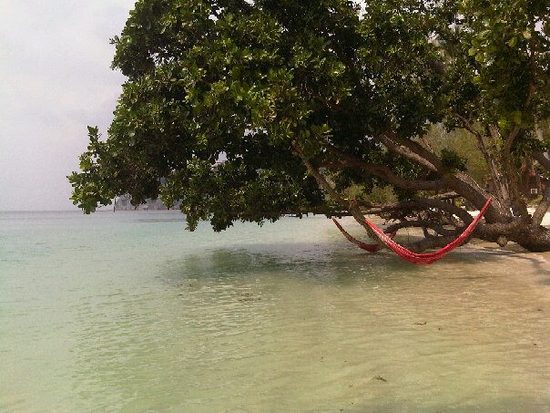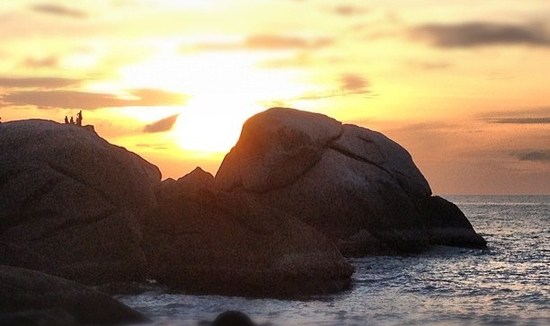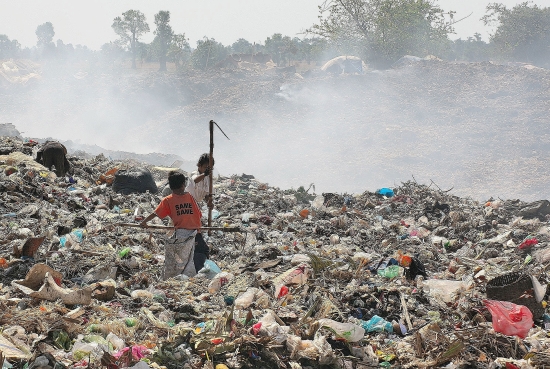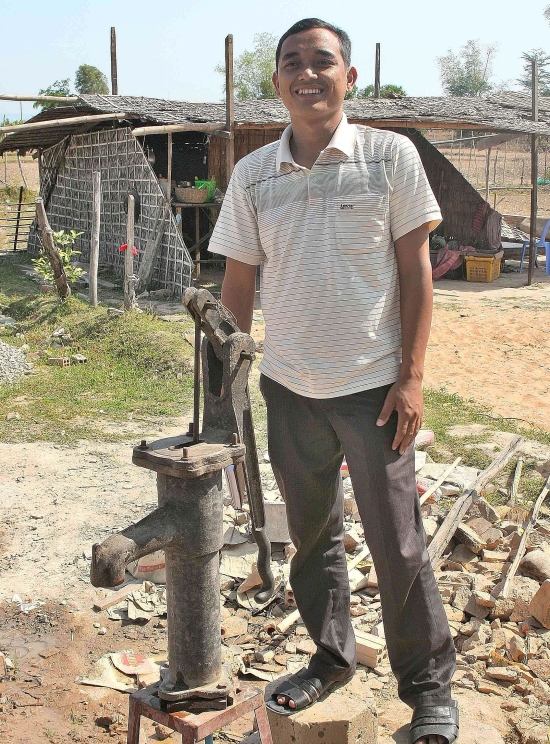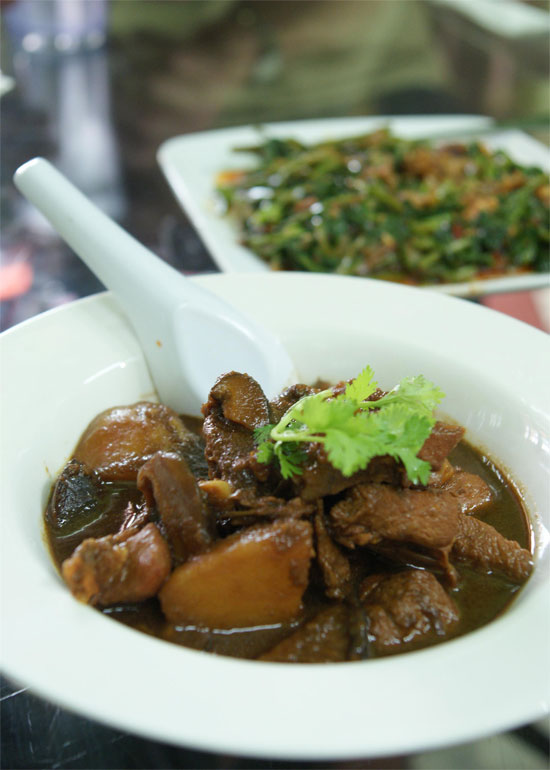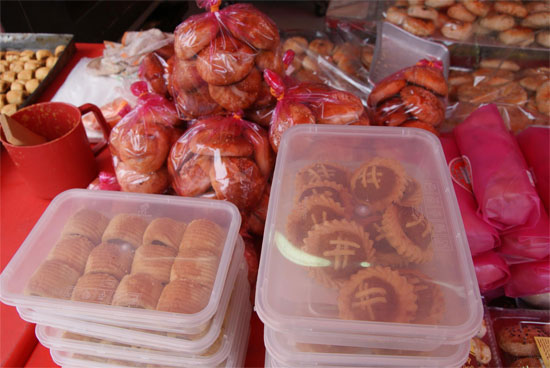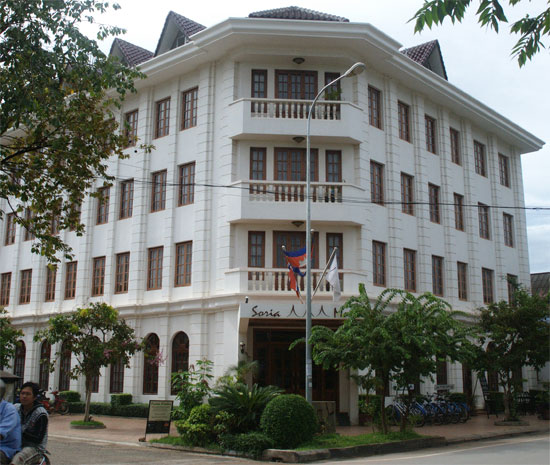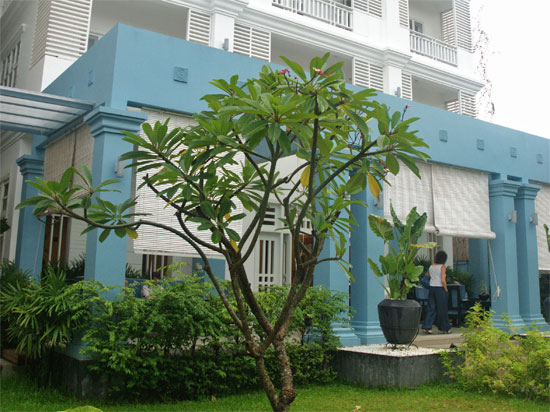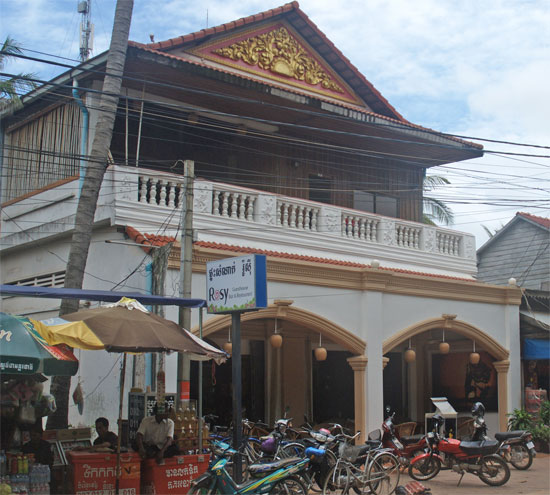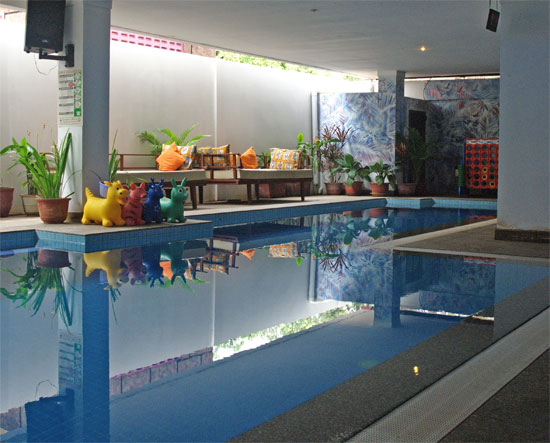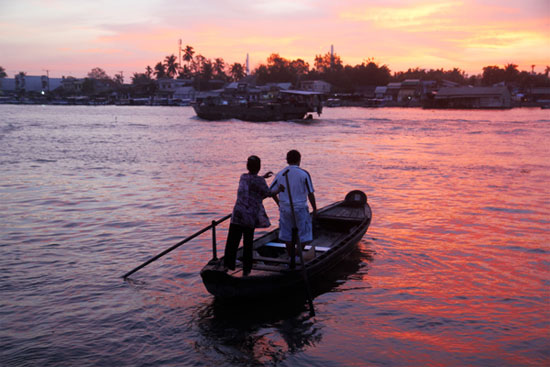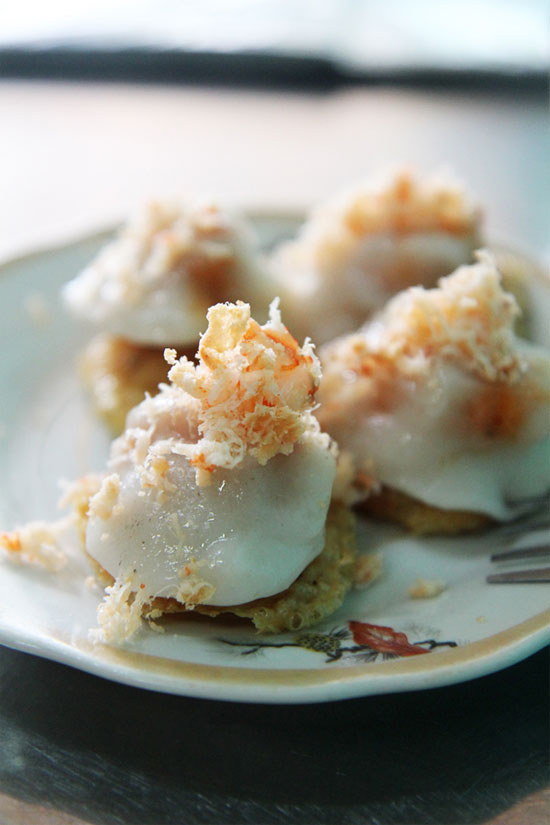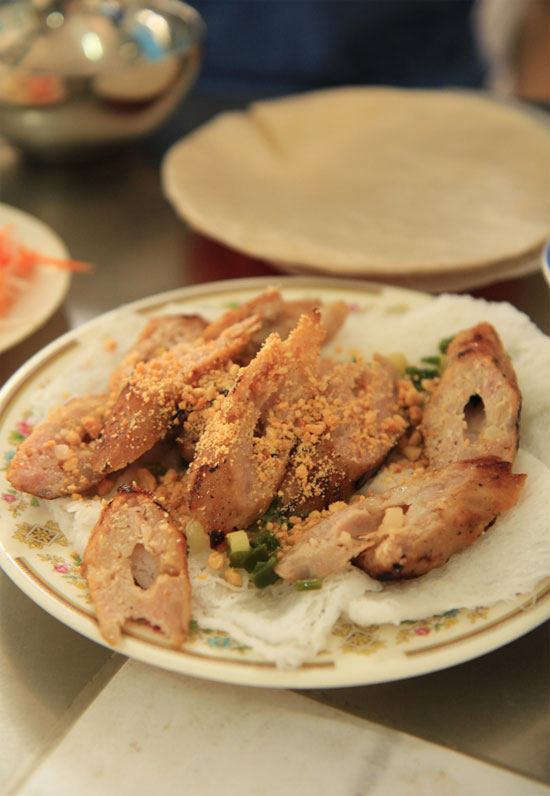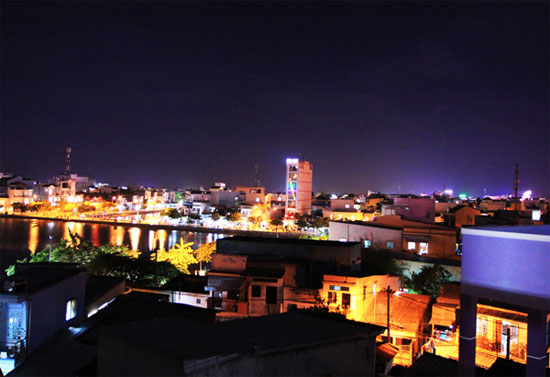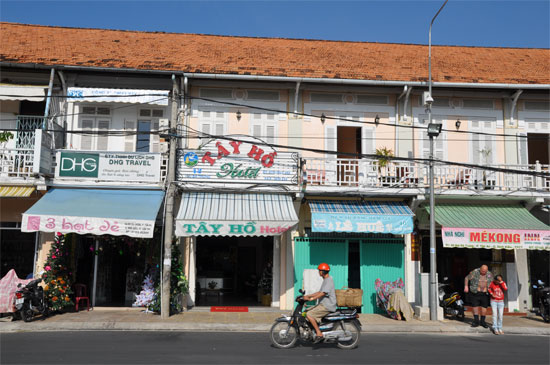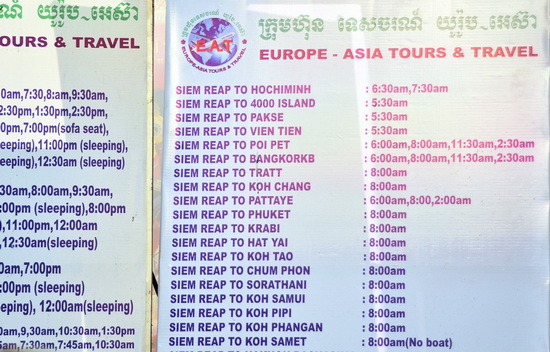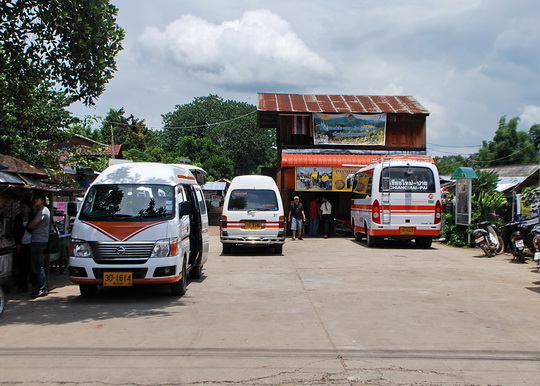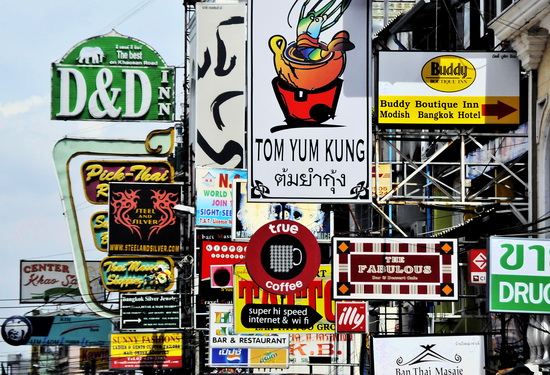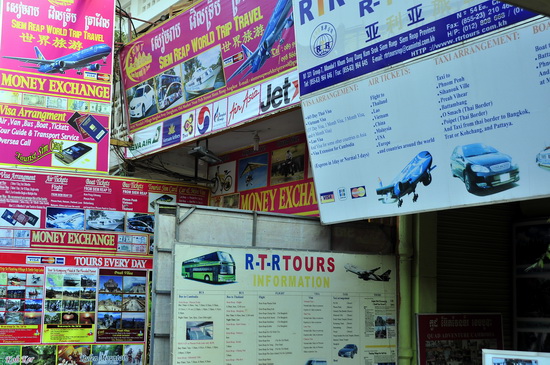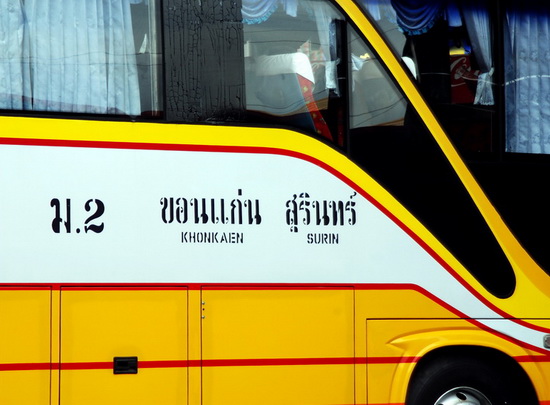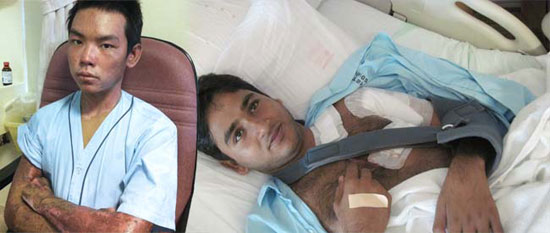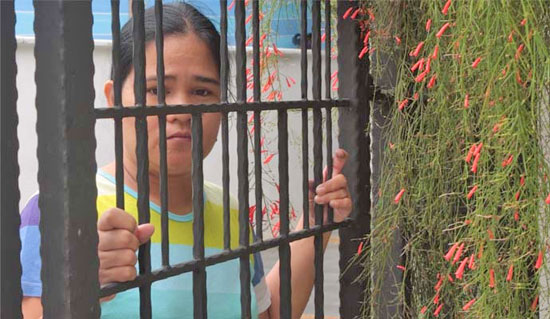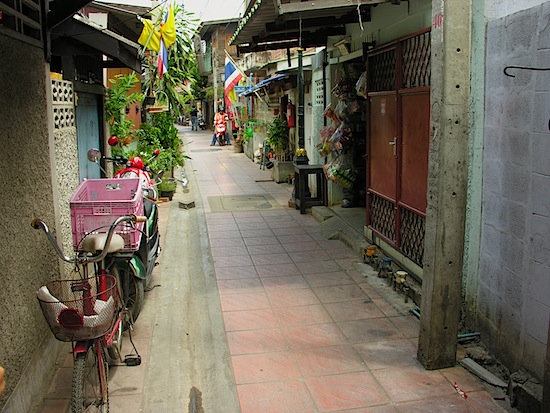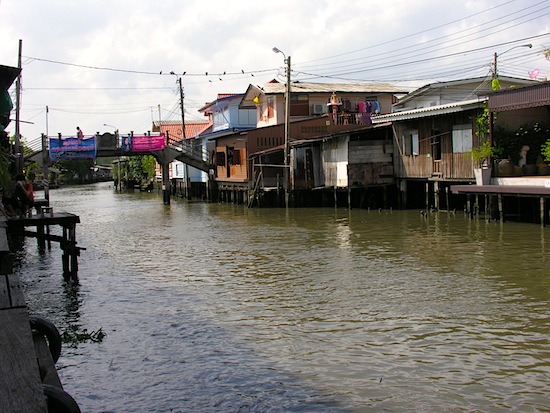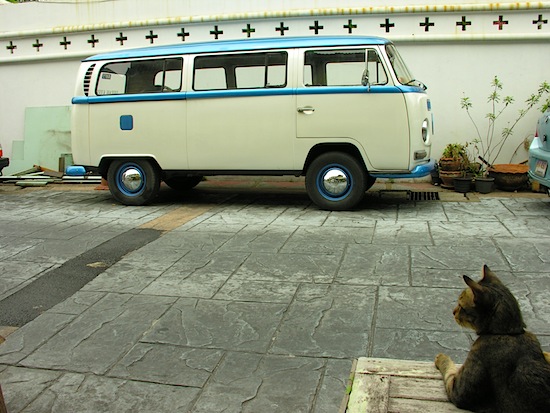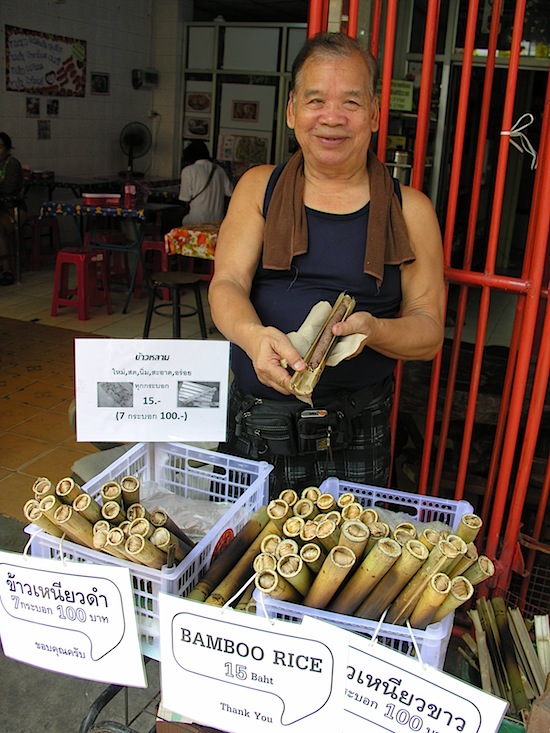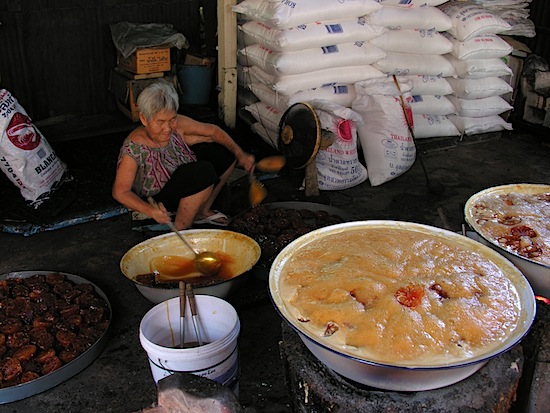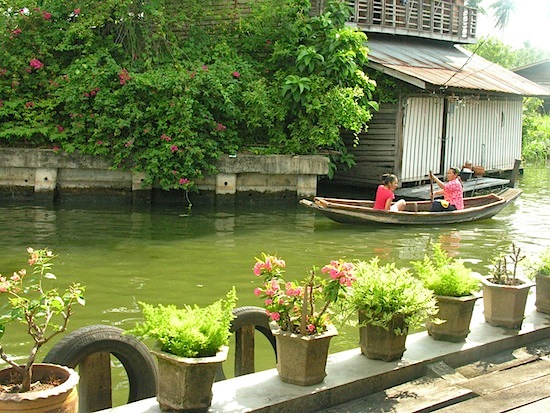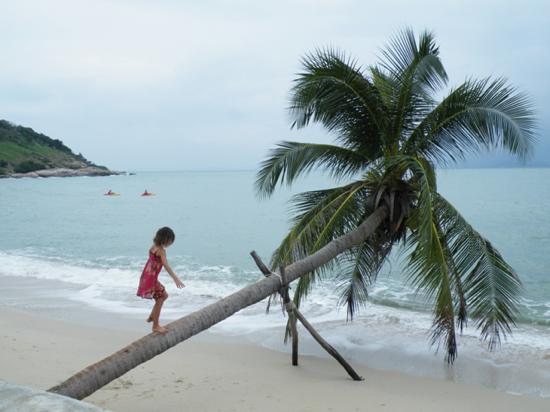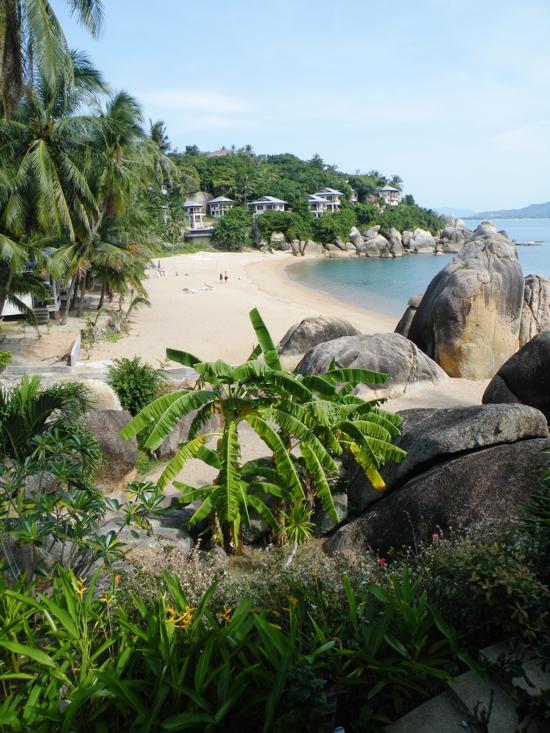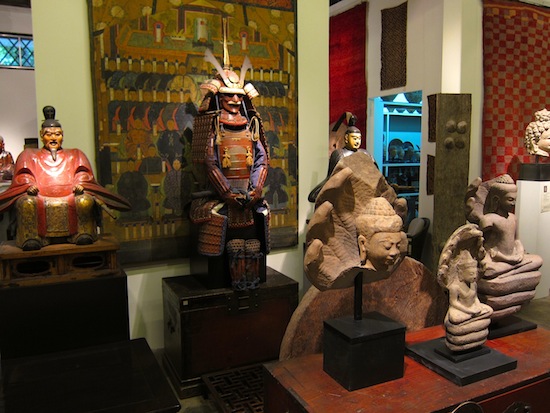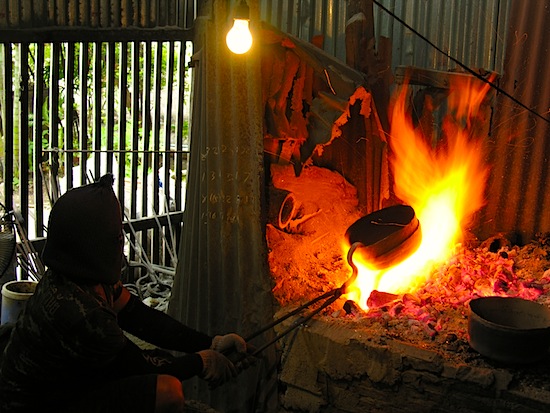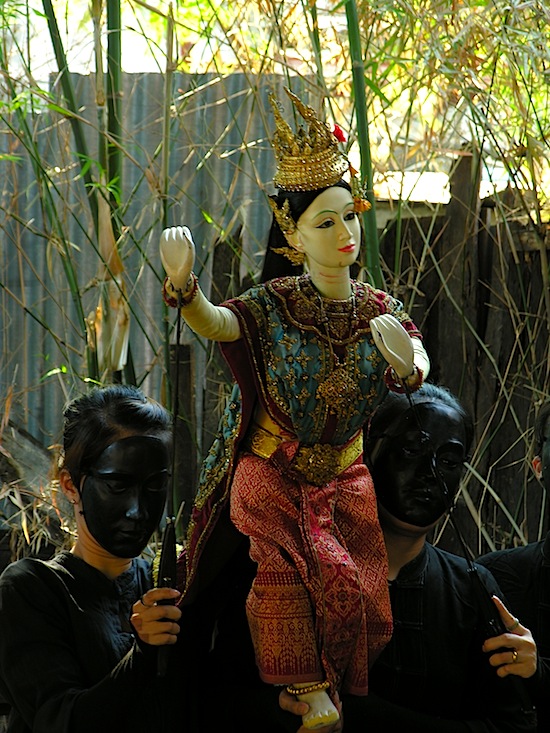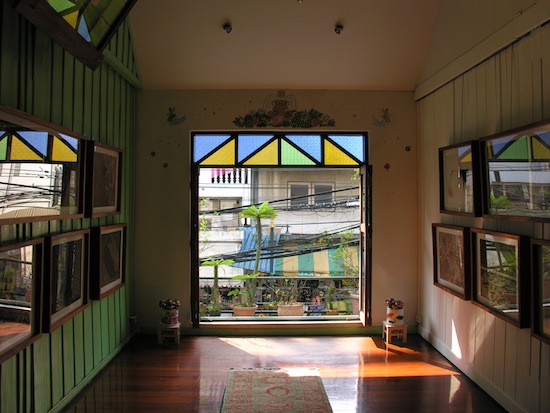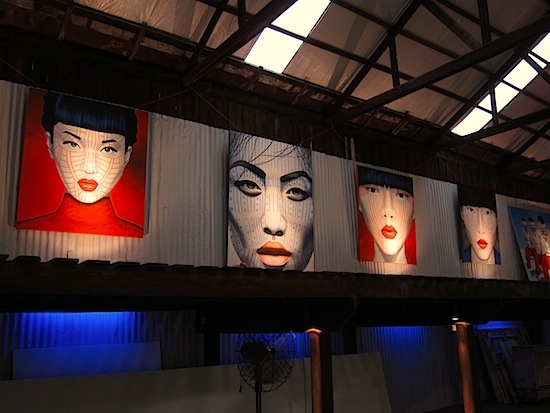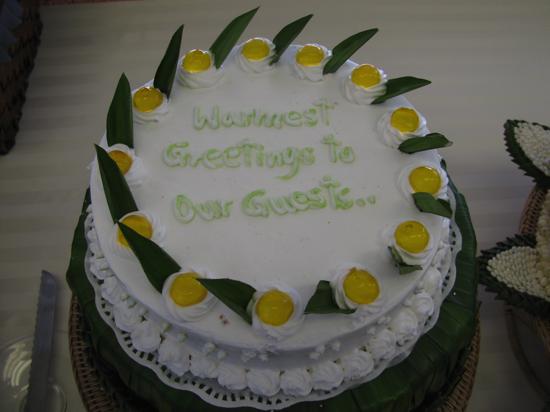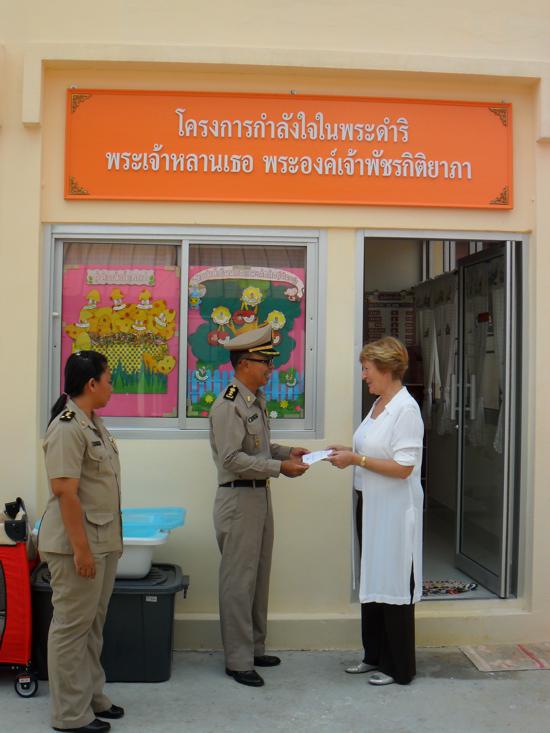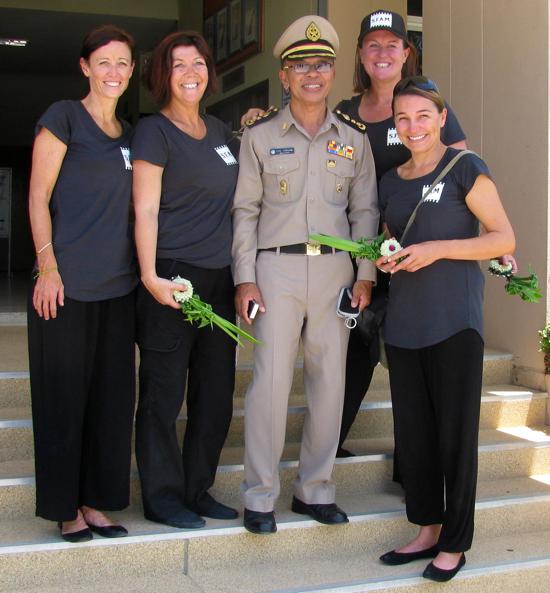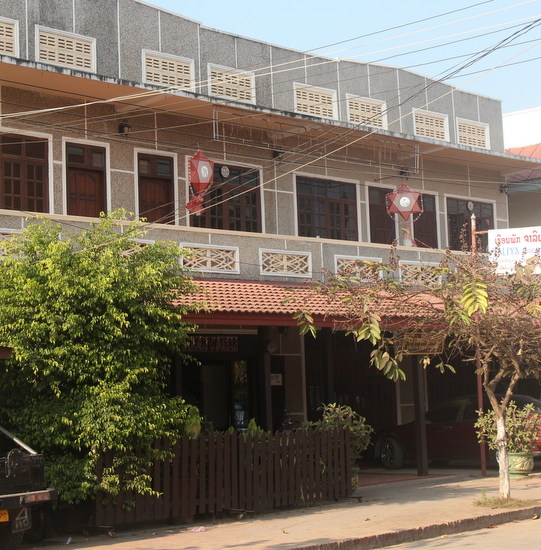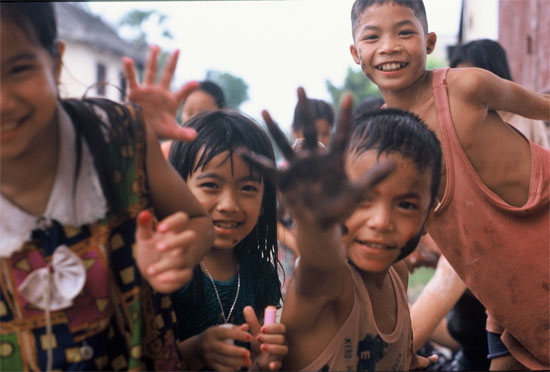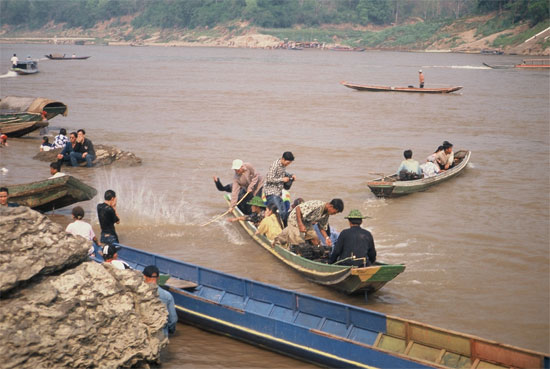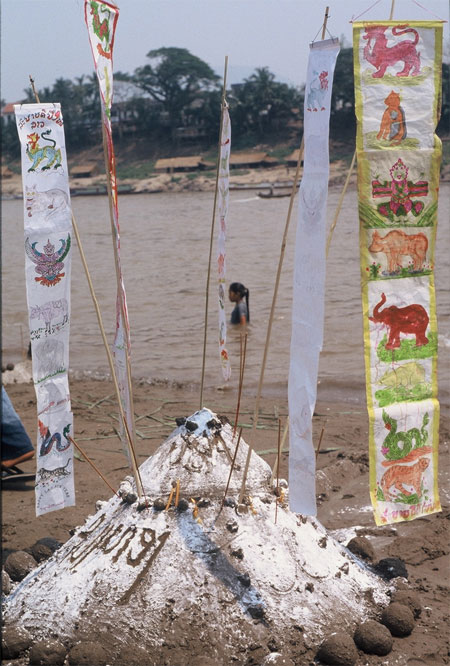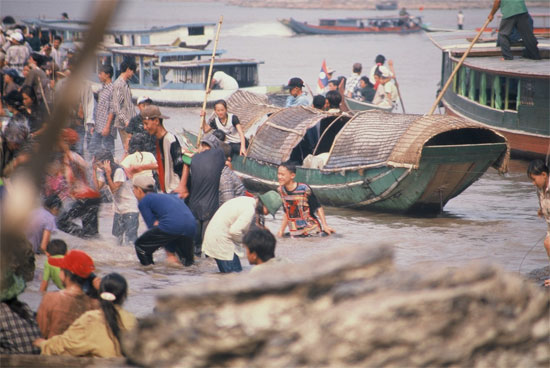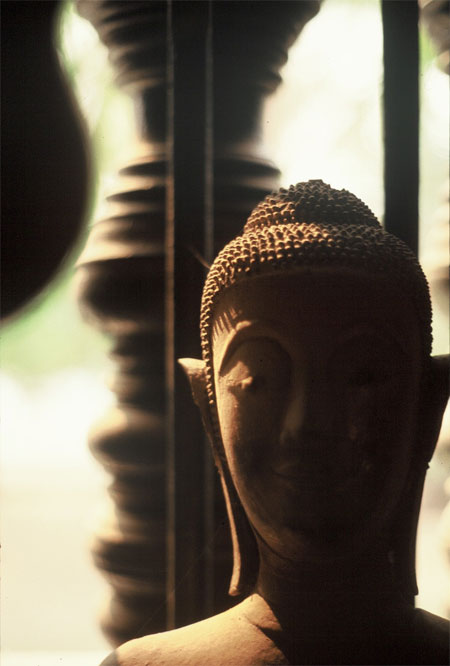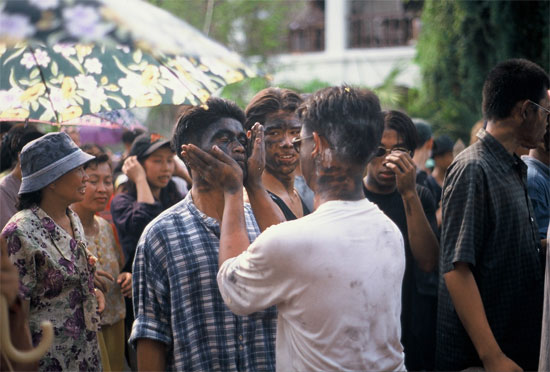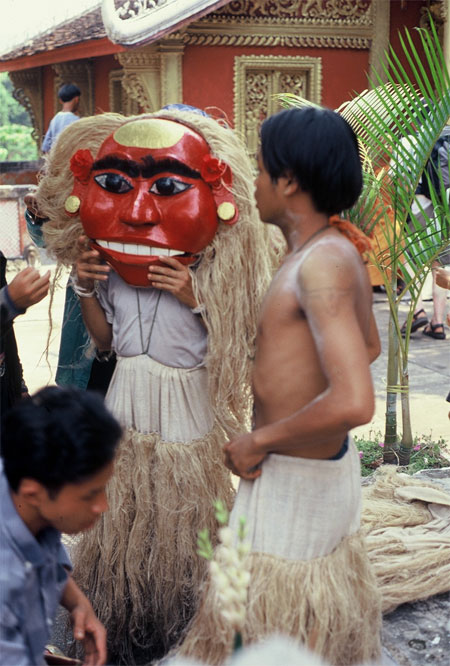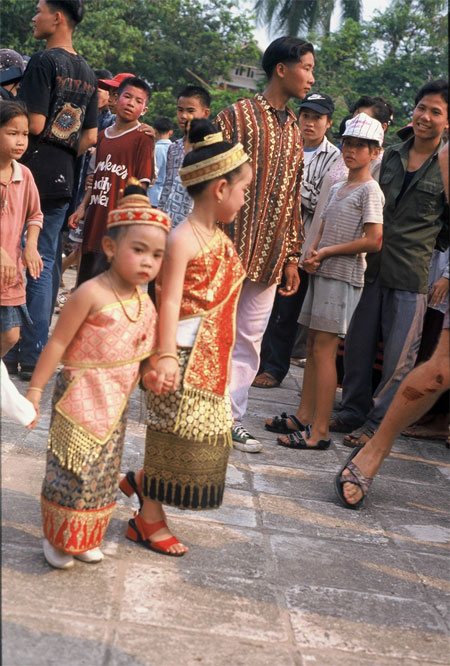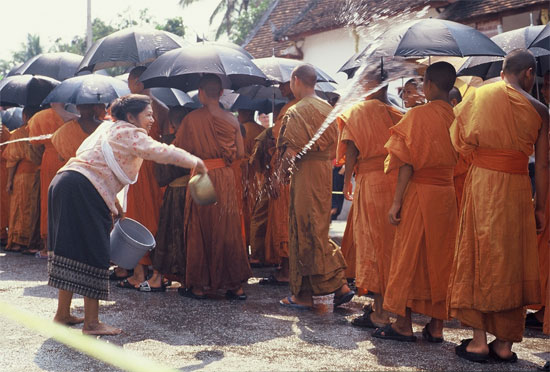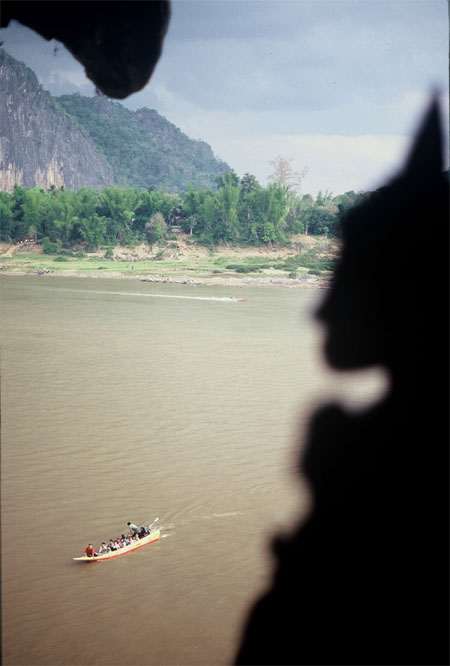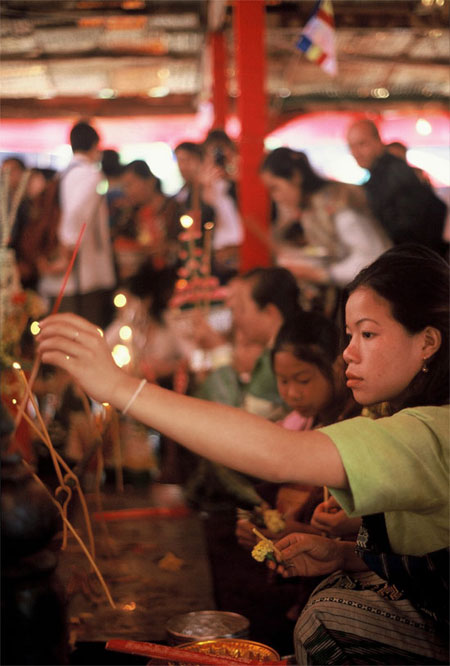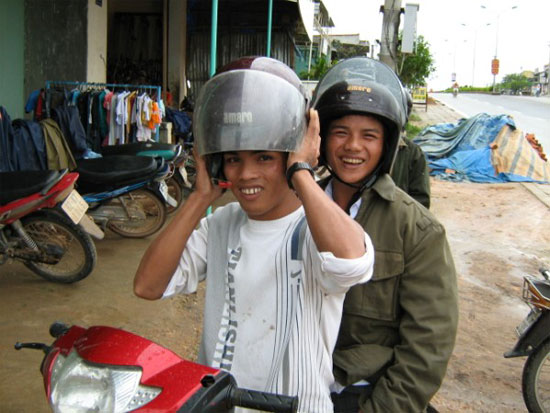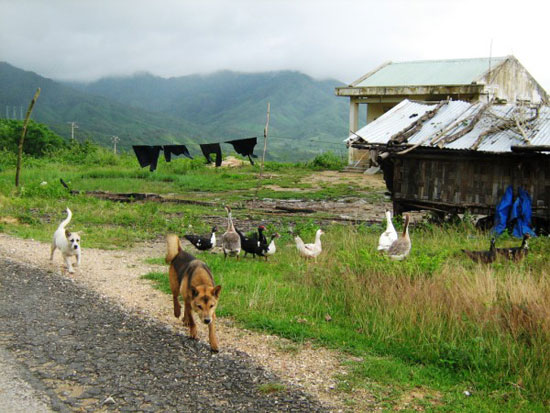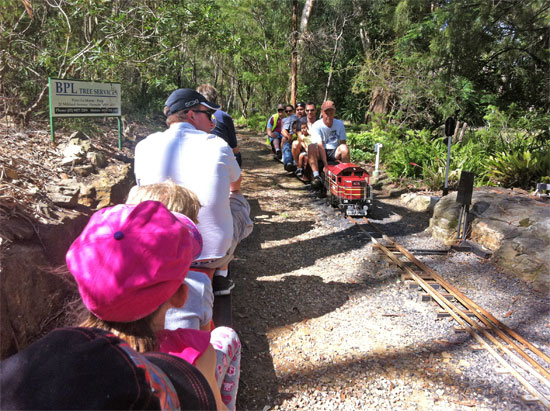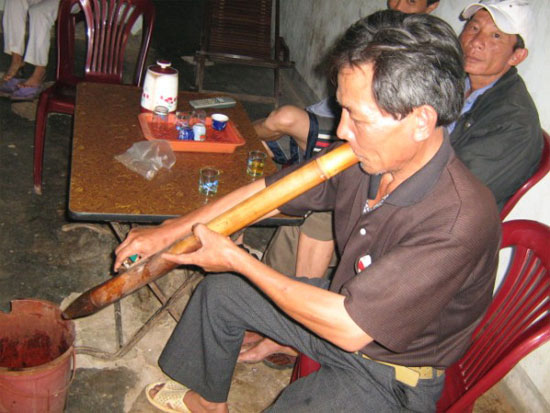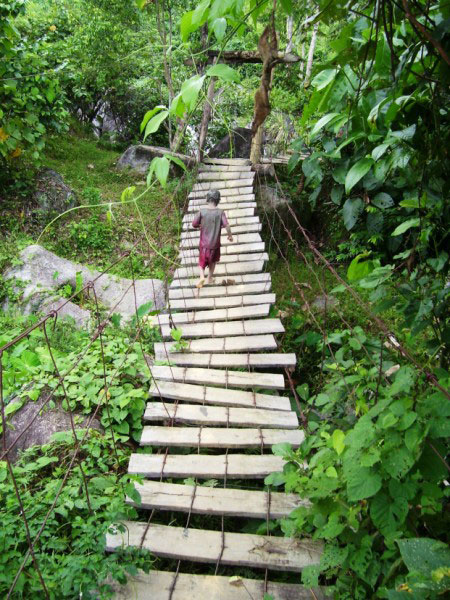Situated on a hill rising dramatically at the intersection of two rivers, Luang Prabang has for centuries enchanted those who arrive by boat still probably one of the best ways to first see the former royal capital of Laos. This town dominated by wats of unspeakable beauty is somnambulent, peaceful and languid, masking a fascinating history of conquest and recapture, and only hinting at an intricate culture and complex traditions. And at designated times of year, the town springs to a life that is unique.
Pi Mai, or New Year, occurs in mid-April and is the most elaborate and vibrant of the festivals dotting the Lao calendar year. It marks the beginning of the new agricultural year, with rain expected any day, and as if throwing back a blanket, the town wakes up and a time-honoured drama unfolds to seduce all who are lucky enough to be there. Extending for three days, the festival begins on the last day of the old year, and ends on the first day of the new. Between these days is a 'neutral' day, where the Lao reputedly don't age.
![The kids of Pi Mai Lao. Class of 1999]() The kids of Pi Mai Lao. Class of 1999
The kids of Pi Mai Lao. Class of 1999On the first day of rituals, we awake with the sun. Already the street below is milling with people. There's a palpable expectant feel in the air, and we follow the crowds to what's known as talaat nat, where all the necessary festival items ranging from candles to live animals are for sale. Pairs of birds in tiny pink straw cages lined up neatly on mats chirp incessantly alongside tiny fish in buckets being sloshed into small plastic bags and restless turtles and frogs stretching against protective nets: the liberators of these animals will gain merit.
![Don't forget your brollie.]() Don't forget your brollie.
Don't forget your brollie.Traditional Lao musical instruments are also for sale, along with basketware, obscure noise-making implements, helium balloons, sweets, soups and coconut ice cream. Streams of coloured paper hand-painted with the signs of the Lao zodiac and mounted onto slim sticks are carried along by the crowd, fluttering in the slight breeze. Gambling is popular: it's hard to work out how the odds work on the myriad of games. Throwing a tennis ball, aiming a dart, flicking a slingshot or spinning a fish can variously win you cigarettes, fish sauce, washing detergent, or, if you're unlucky, a lolly for trying.
We stop at one of the wats along the road, and watch an older man show novices how to asperse, or wash, the temple's Buddhas. This is one of the most serious rites of the new year, representing purity and life, as well as the renewal the rains will bring.
![Forget about staying dry.]() Forget about staying dry.
Forget about staying dry.By midday boats are streaming across to the other side of the Mekong. We are drenched by the time we reach our boat: people line up with buckets of water or hoses outside their houses, dousing any passers-by with a good-humoured litre or two. Traditionally, this was also a symbolic rite of purification, which developed into something more fun where women would chase men to soak them. According to an 1887 description of the rite, women also pursued men with mud, oil and soot. Monks, nobles and princes were not spared, the princes apparently wearing a minimum of clothing to avoid damage to their royal best. Nowadays everyone joins in the fun.
![Now that is a sand castle.]() Now that is a sand castle.
Now that is a sand castle.On the other side of the Mekong, pa that sai, stupas made of sand, are being constructed along the bank. It's certainly an art: sand, covered with water one genius fills a plastic bag with holes and sprinkles this over his group's are built higher and higher, surrounded by small balls of mud, sprinkled with flour into which the Buddhist year is inscribed, and finally decorated with incense and candles. Each grain of sand is said to wash away a single sin of the builder. A prayer and family snaps follow upon completion, and a plunge into the Mekong to cool off may as well take place: if you don't wet yourself, someone else is bound to.
At about four o'clock, in what feels like a finale, a Lao Aviation plane comes swooping down the river, just metres over our heads: mouths drop open in this century's addition to tradition.
![Mayhem.]() Mayhem.
Mayhem.The following morning at Wat Ahaan, the ritual masks of Pu No and Na No are brought out from storage and preened for the day's procession later on. A dozen or so children are finger-combing the straw hair of the two red-faced masks representing the devata luang, the town's royal tutelary gods. According to one legend, the Lao kings who ruled until the mid-twentieth century were descended from the king of the heavenly gods, King Borom. The King descended from the sky on his royal elephant and landed at what is now known as Dien Bien Phu. He travelled through thick forests accompanied by Pu No and Na No, who wielded shovels and axes to demolish vegetation and hostile parties. When the party reached the site of the present Luang Prabang, Pu No and Na No became the future town's devata luang, wielding more power than the fifteen nagas that had previously protected the area.
![A pensive moment at Wat Ahaan]() A pensive moment at Wat Ahaan.
A pensive moment at Wat Ahaan.By early afternoon, people are lining the footpaths in order to get a good spot to see the parade through town. Water-dousing continues, with nobody spared. The tourists screaming 'Camera! No!' get it down their backs while elegant women wearing traditional clothes get a delicate cupful instead of a bucket. It doesn't take long before we are spotted by some water, lipstick, charcoal and flour-wielding children. The water is a welcome relief from the heat, but it's soon followed by flour, lipstick across the face, and charcoal on the nose. Just when I think it's over, a group of three young girls come running up with their green pails. 'No more!' I plead. They shake their heads and proffer the buckets, dipping their hands in and washing their faces to show what I should do to prepare myself for the parade.
![Leave the dress whites at home.]() Leave the dress whites at home.
Leave the dress whites at home.At the head of the procession are the city officials, carrying pyramids of carefully arranged banana leaves and flowers, followed by saffron streams of monks and novices who are splashed with perfumed water containing rose petals. Pu No and Na No come next, accompanied by the little lion known as Singkeo Singkham. Two pick up trucks carrying abbots in litters come next, followed by women dressed in intricately woven traditional sin and pabieng, or skirts and sashes.
![Pu No and Na No unmasked!]() Pu No and Na No unmasked!
Pu No and Na No unmasked!A chariot of an absurdly large rat representing of course, the year of the rat comes next, along with the woman voted as nang sang khan. According to another legend, a God-king with a four-faced head once asked a wise young man a riddle which, if he could not answer, would result in the loss of his head. The young man was able to answer the riddle, leading to the God-king forfeiting his head and his kingdom. Being such a powerful God, however, he knew his death would wreak havoc with the earth. So he ordered the wise man to proffer his head to his seven daughters, who would store it deep in the earth, but bring it out to be paraded once a year in order for the world to live peacefully. The nang sang khan represents one of the God-king's daughters.
We follow the parade which concludes with groups of men dancing the fon dab, a traditional Lao dance, to sprawling Wat Xieng Thong. Here there are more dancers and musicians, and stalls selling young coconuts, Pepsi and noodles have sprung up. More importantly, Pu No and Na No accept offerings from the people, before officially ending the day by performing a dance. In the meantime, monks are themselves being washed behind curtains and are peeped at by children brave enough to draw them back for a moment.
![No powder in sight.]() No powder in sight.
No powder in sight.The following day is the day the spirit of the new year arrives. At sunrise, there is a special tak bat, where monks are given fruits, sweets, cakes flowers and money rather than just the usual sticky rice. At Phu Si, the hill dominating the town, women kneeling on mats with silver bowls catching the crawling sun wait patiently for the monks to arrive. Like rays of the arriving sunlight itself, the single file monks emerge eventually and take their alms.
An hour later the attention focuses on Phu Si itself. Under the heady scent of frangipani, families arrive to walk up the hill to Wat That Chom Si with rice, lollies and biscuits to propitiate the spirits. The offerings are left along the 328 steps leading all the way to the summit. A group of mischievous kids pick up the sweets as soon as possible after they've been laid out: some have been well-trained, bringing plastic bags for the collecting! From Thaat Chom Si, the view is stunning. Mist drifts through the impressive mountains in the distance while the Nam Khan stretches like a lover below.
![Everyone gets some.]() Everyone gets some.
Everyone gets some.In the afternoon, yesterday's parade goes in the reverse direction. We arrive at Wat Xieng Thong well before the parade begins to observe the preparations. The masks of Pu No and Na No are brought out for display. Children in red and blue outfits sit around them, patiently waiting. Monks with black umbrellas begin to congregate. A recalcitrant monk asks one of the children to go buy him a packet of cigarettes. The men who will wear the masks tighten their pull-tie pants with a grimace and allow the masks to be placed on their heads. Lipsticked girls shade themselves under dainty umbrellas as they wait, fanned by nearby friends to stay cool.
Led by the Lao flag, the parade begins again and heads back to Wat That Luang with similar crowd participation.
On the second day of the new year, after the official celebrations are over, the residents of Luang Prabang traditionally head by boat to the Pak Ou caves located twenty-five kilometres upstream. Here they pay homage to the multitudes of Buddha statues, as well as asperse them with perfumed water.
![The view from Pak Ou.]() The view from Pak Ou.
The view from Pak Ou.We hire a boat in the morning to take us there, through the mist and the ubiquitous frangipani scent. At the caves, children sell flowers, incense, orange candles and water perfumed with yellow, pink and white flower petals. People inside are quietly sprinkling water over the statues, the occasional boat engine the only sound intruding. In the darker cave, the atmosphere is intimate, with curlicues of smoke being caught in the flickering candlelight. Footsteps are muted in the dust, people speak in hushed tones and get their photograph taken praying at the shrines the flash a sudden reminder of what century it is.
The following day, the rituals continue, with the procession of the Pha Bang taking place. The highly revered golden image of Buddha is no more than 50cm tall and originally came from Sri Lanka, via a king of Cambodia. Moved throughout history variously between Luang Prabang, Vientiane and the then capital of Siam, Thonburi, it is now stored at the National Museum, formerly the Royal Palace. Led again by Pu No and Na No, the Pha Bang is carried from the Museum in a prasat, a small carved wooden palace-like structure, to the courtyard of Wat Mai, where a marquee has been specially erected. It's a short but colourful and joyous procession.
![Timeless rituals.]() Timeless rituals.
Timeless rituals.Here the Pha Bang will stay, illuminated by fluorescent lights, for three days and nights. Flowers, incense and candles are offered at such a rate that a few people are specially employed to remove them as they pile to unmanageable heights. The people also bless the Pha Bang with holy water through a hanglin, a hollow wooden implement carved into the shape of a naga. The water is poured through the tail of the naga, flowing through to the serpent's mouth and then onto the Pha Bang placed below it. Until a few decades ago, the King would carry out this, along with nobles, Pu No, Na No and monks. Today Pu No and Na No and the monks still carry out this duty.
Some things may have changed in Laos, but the beauty of a resilient culture continues to live on.
This story relates to our experience of Pi Mai Lao in Luang Prabang in 1999. A modified version of this story previously appeared on Fourelephants.com & wanderingeducators.com
